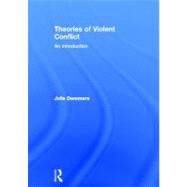
Note: Supplemental materials are not guaranteed with Rental or Used book purchases.
Purchase Benefits
What is included with this book?
| Figures, tables and boxes | p. viii |
| Acknowledgements | p. ix |
| Introduction: conflicts analysis in context | p. 1 |
| Identity, boundaries and violence | p. 18 |
| On love and hate: social identity approaches to inter-group violence | p. 38 |
| Violence and structures | p. 54 |
| Mobilization for collective violent action: multi-causal approaches | p. 77 |
| Rational choice theory: the costs and benefits of war | p. 100 |
| Telling each other apart: a discursive approach to violent conflict | p. 116 |
| Conclusions | p. 139 |
| Notes | p. 143 |
| References | p. 146 |
| Index | p. 155 |
| Table of Contents provided by Ingram. All Rights Reserved. |
The New copy of this book will include any supplemental materials advertised. Please check the title of the book to determine if it should include any access cards, study guides, lab manuals, CDs, etc.
The Used, Rental and eBook copies of this book are not guaranteed to include any supplemental materials. Typically, only the book itself is included. This is true even if the title states it includes any access cards, study guides, lab manuals, CDs, etc.